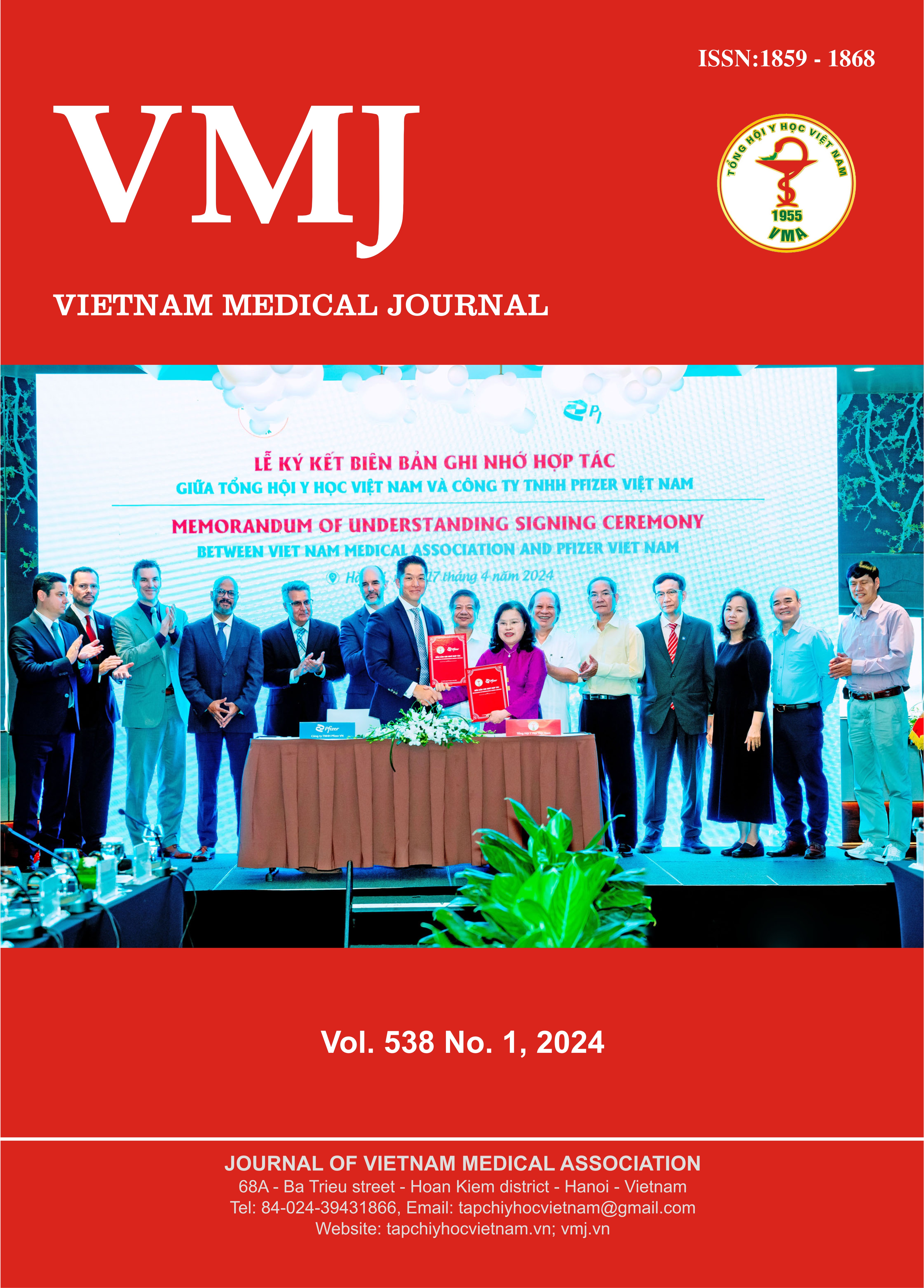INTER- AND INTRA- OBSERVER RELIABILITY OF MAGNATIC RESONANCE IMAGING FOR DIAGNOSIS OF LUMBAR FAR LATERAL DISC HERNIATION
Nội dung chính của bài viết
Tóm tắt
Objective: To determine the inter- and intra- observer reliability of MRI for diagnosis of lumbar far lateral disc herniation. Method: 27 patients in whom lumbar far lateral disc herniation was definitely diagnosed by operative findings at our department between May 2018 and December 2022 were included. The magnetic resonance images consisting of T1- and T2-weighted axial and sagittal images, and these were reviewed blindly and independently by three orthopaedic spine surgeons in a random manner. The images were interpreted as positive or negative for far lateral disc herniation on 2 different occasions 3 months apart. Results were analyzed using Cohen's kappa statistic, and strengths of agreements were determined using the Landis and Koch criteria. Result: The kappa values for inter-reader agreement averaged 0.234 (0.282, 0.111, and 0.308 respectively) on the first occasion, and 0.166 (0.249, 0.111, and 0.137 respectively) on the second occasion, with an overall mean value of 0.200. Thus, the strength of agreement was only slight-to-fair according to the Landis and Koch criteria. Kappa values for intra-reader agreement averaged 0.479 (0.488, 0.491, and 0.459 respectively), indicating moderate agreement. Conclusion: The present study indicates that magnetic resonance imaging is not a reliable imaging modality for diagnosing lumbar lateral disc herniation. It is necessary to carefully evaluate the intra-foramina and extra-foramina of lumbar spine region on MRI of these patients and the spine surgeon should pay attention to the correlation between the clinical symptoms and MRI findings of these patients.
Chi tiết bài viết
Từ khóa
Lumbar lateral disc herniation, Inter-observer reliability, Intra-observer reliability, Magnetic resonance imaging
Tài liệu tham khảo
2. Tessitore E, de Tribolet N (2004). Far-lateral lumbar disc herniation: the microsurgical transmuscular approach. Neurosurgery 54(4):939-42; discussion 942.
3. Landis JR, Koch GG (1997). The measurement of observer agreement for categorical data. Biometrics 3(1):159-74.
4. Moon KP, Suh KT, Lee JS (2009). Reliability of MRI findings for Symptomatic Extraforaminal Disc Herniation in Lumbar Spine. Asian Spine J. 3(1):16-20.
5. Grenier N, Gréselle JF, Douws C, Vital JM, Sénégas J, Broussin J, et al (1990). MR imaging of foraminal and extraforaminal lumbar disk herniations. J Comput Assist Tomogr 14(2):243-9.
6. Park SK, Yeom JS, Lee C, Chang BS, Lee JH, Lee JH, et al (2005). Diagnosis of Lumbar Lateral Disc Herniation: Value of Magnetic Resonance Imaging Revisited. J Korean Soc Spine Surg 12(1):28.
7. Kim SW, Yeom JS, Park SK, Chang BS, Lee DH, Lee JH, et al (2009). Inter- and intra-observer reliability of MRI for lumbar lateral disc herniation. Clin Orthop Surg 1(1):34-9.


